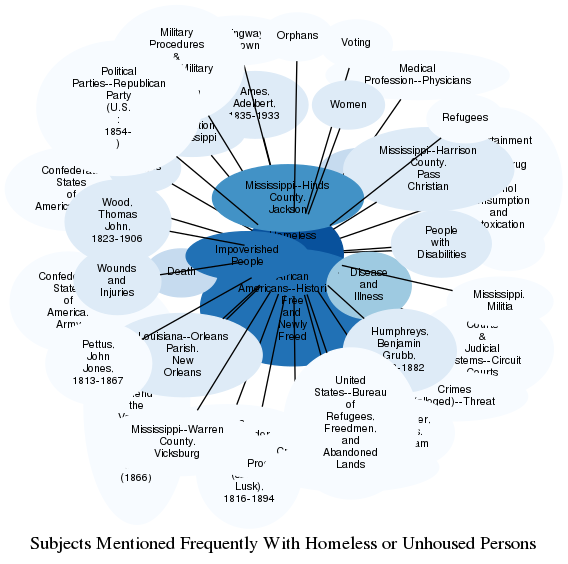Description
The Cambridge Dictionary defines homeless or unhoused persons as "people who do not have a home, usually because they are [impoverished]" (Cambridge Dictionary), but one scholar notes that classifying homelessness based on the lack of fixed domicile narrows the definition of a varied and diverse experience, arguing instead for a more fluid definition of homeless persons as those experiencing "the lack of a fixed abode, an impoverished lifestyle, and, in most cases, weak or nonexistent family support" (Kusmer, Down and Out, on the Road, 16).
Homelessness expanded rapidly in the nineteenth-century United States, in large part due to rapid industrialization and the wide income disparity associated with it. While economic depressions contributed heavily to homelessness, "even during prosperous times workers might be forced into the [homeless] class as a result of seasonal unemployment, automation, or industrial accidents" (Encyclopedia of the United States in the Nineteenth Century, Vol. 2, 27). Prior to the Civil War, few homeless people lived in the American South. However, homelessness expanded rapidly in the South in the 1870s in part because improved transportation on railroads provided means by which homeless people could easily travel through the region and because the collapse of chattel slavery increased the availability of seasonal agricultural work for both white and Black people in the South.
Reform groups, generally associated with evangelical Christian denominations, often attempted to aid homeless persons by providing temporary shelter and food. Certain states also made institutional efforts to aid homeless persons by establishing almshouses or, most often, so-called "tramp rooms" in local police stations where homeless persons could temporarily stay overnight. However, few municipal or governmental authorities made institutional efforts to alleviate homelessness or to aid homeless persons, often arresting homeless persons as "vagrants" and sentencing them to varied periods in jail.
Homelessness in the nineteenth-century United States, like so much else, was also subject to divisions of race and gender, as men were far more likely to experience homelessness than women, and African Americans of either sex more likely than whites (Encyclopedia of the United States in the Nineteenth Century, Vol. 2, 27). While nineteenth-century Americans used many terms to refer to homeless persons, many of such labels came laden with associations of criminality, laziness, or subversiveness and often helped further cement class inequality (Kusmer, Down and Out, on the Road, 8, 21). CWRGM uses the tag "Homeless persons" to emphasize one's personhood and not their social or class status.
See also: https://en.wikipedia.org/wiki/Homelessness_in_the_United_States
Related Subjects

The graph displays the other subjects mentioned on the same pages as the subject "Homeless or Unhoused Persons". If the same subject occurs on a page with "Homeless or Unhoused Persons" more than once, it appears closer to "Homeless or Unhoused Persons" on the graph, and is colored in a darker shade. The closer a subject is to the center, the more "related" the subjects are.